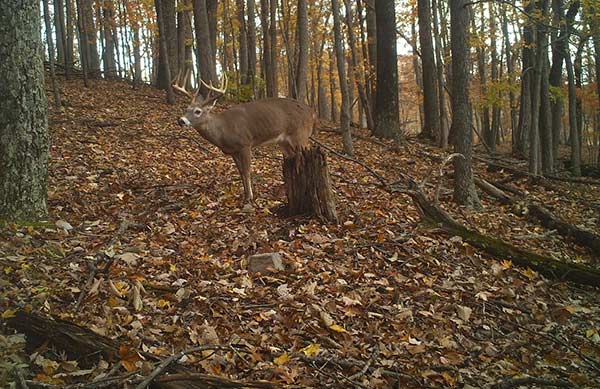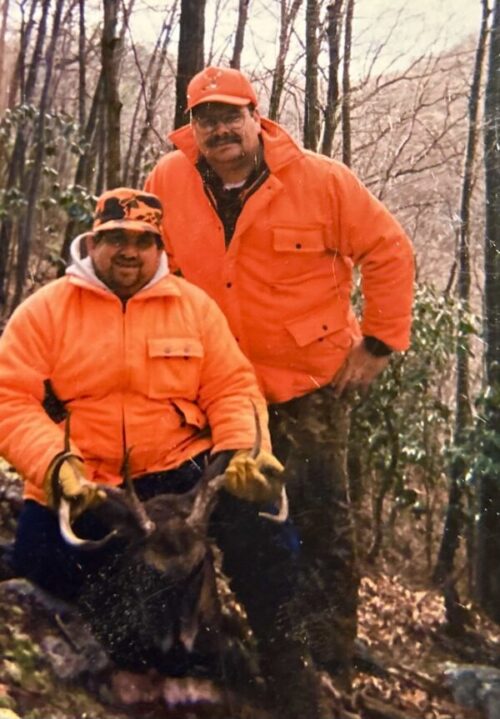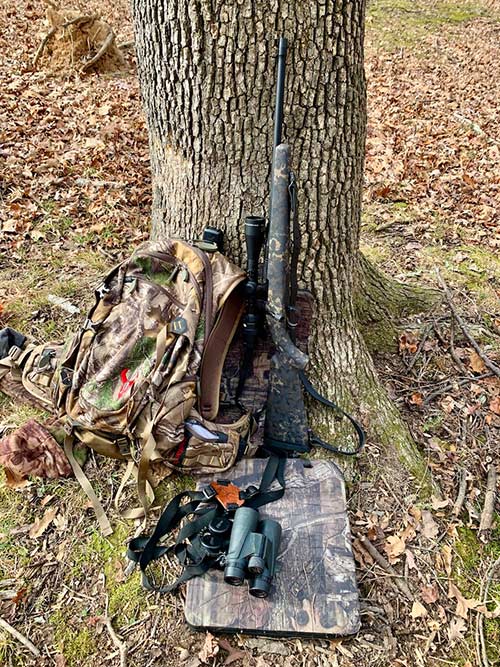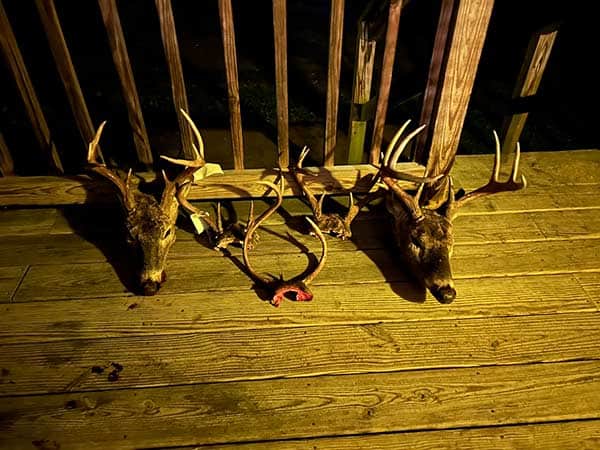
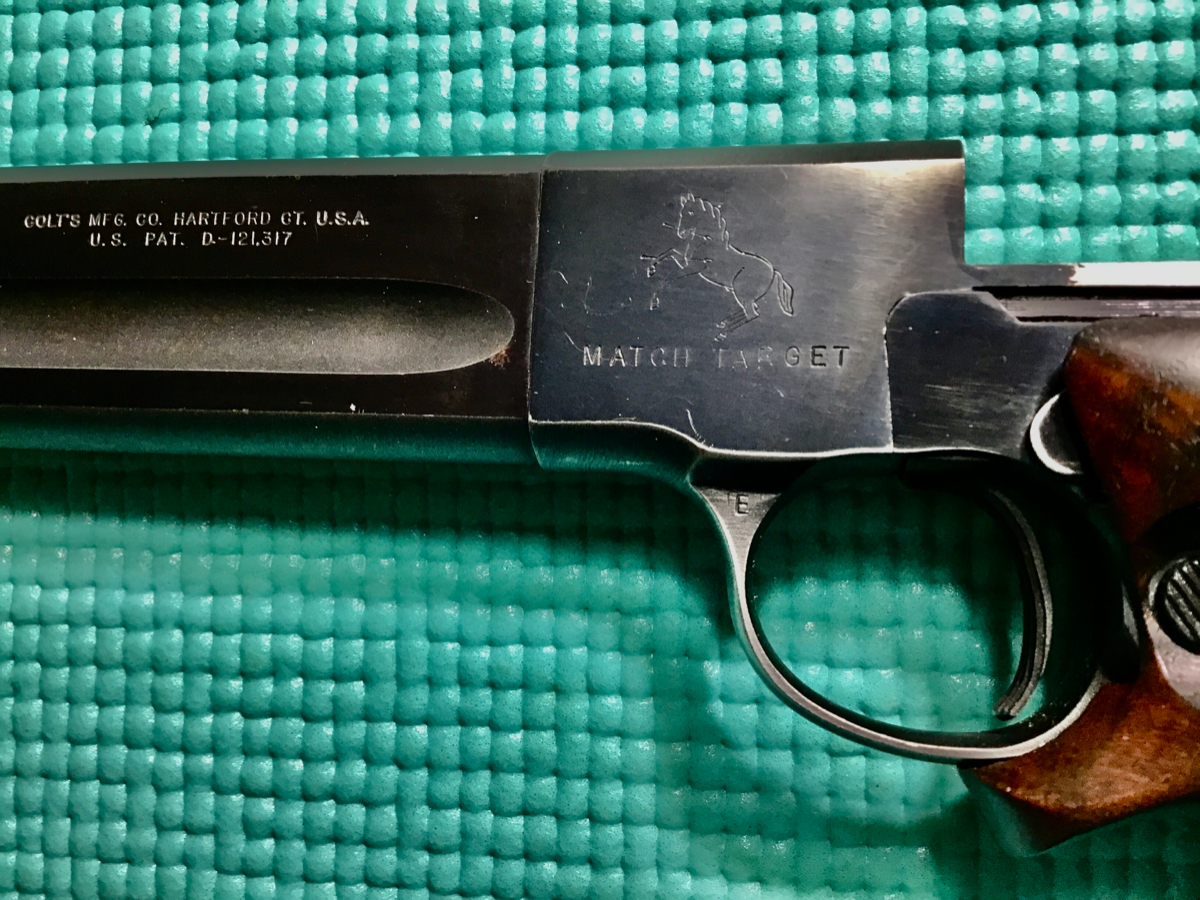
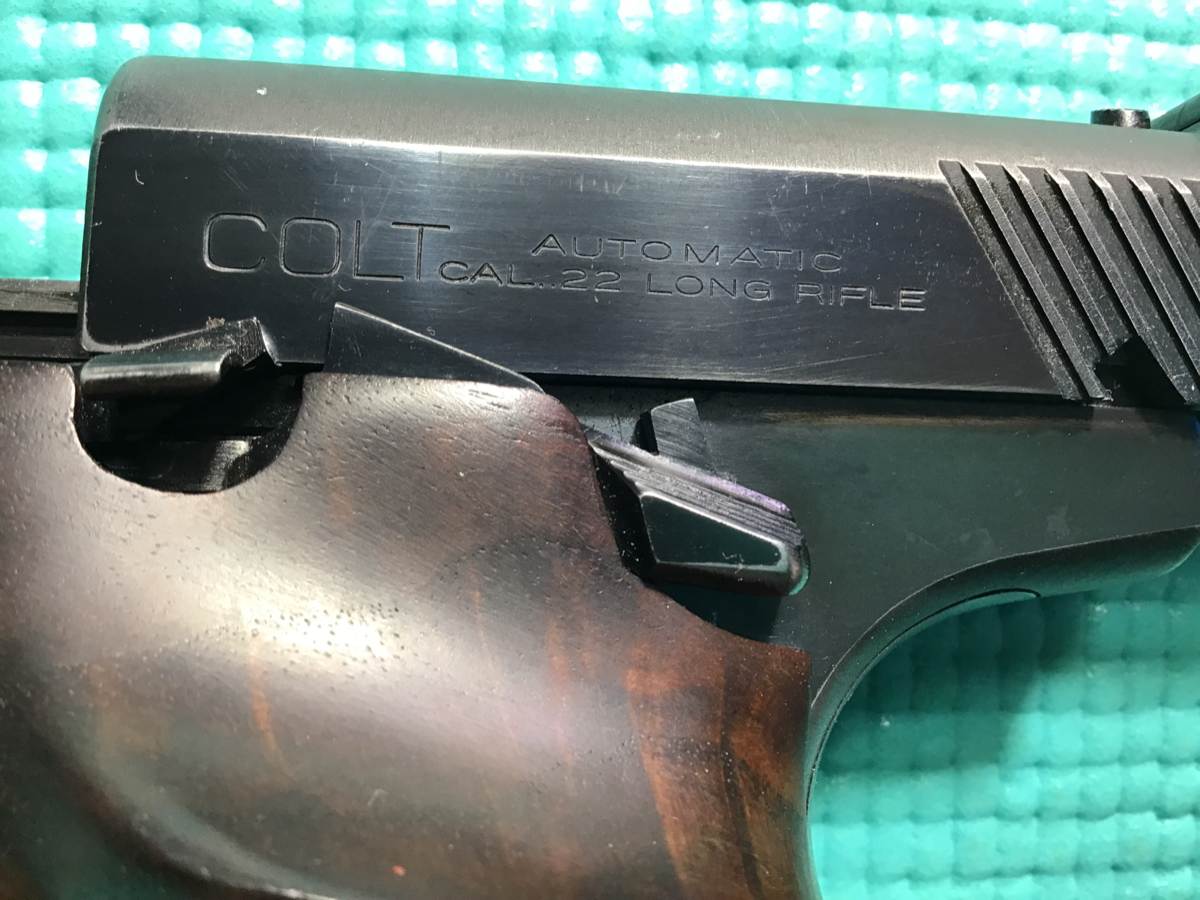


Driving from deer camp is always relaxing. Winding my way back through the mountains of West Virginia and western Maryland, along the same trails Meshach Browning did over a hundred years ago, gives me the perfect time to reflect on past and present hunts.
I recently spent a few days with my cousins, their sons-in-law, and even a grandchild. Seven men ranging in age from 66 to 17 crammed in a small two-bedroom, one-bath cabin was a great way of getting closer in more ways than one.
New Traditions
The West Virginia hunt started back in the late 70s. My cousin Barrel’s dad, my uncle, was killed in a farming accident during a blizzard. My uncle Jerry took Barrel to West Virginia that year to do something different while spending time together. Over the years, more people started going, including myself. As people got older and stopped going, there was always someone younger to step in. It’s the revered cycle of life.
After almost 20 years, the unexpected happened. Uncle Jerry died on the very mountain we hunt. He was only 50. Barrel, Brent and I were there. The saying misery loves company was never more apparent. The experience drew us closer together, and the WVA hunt became almost sacred.
A few years later, our Uncle Gary, Brent’s dad, started coming to WVA. Being older, he didn’t venture far from the road but loved hunting and being outdoors. When walking out of the woods, I’d sometimes smell cigar smoke. I’d follow the aroma and see Gary sitting on a log, enjoying the last light of day, a big grin on his face.
He truly loved the outdoors. During Pennsylvania’s deer season, he’d sit all day, dark to dark, in his tree stand every day of the season. Farmer tough, rain, sleet, snow, cold or wind didn’t deter him. And he made the ride to his stand on his ATV. He did this up until last year when he died at age 80 after having dinner with my cousins.
Current Day
Now, Barrel and I are the “camp elders.” How’d that ever happen? Looking in the mirror, the answer is obvious. Barrel’s taken over Uncle Gary’s log, shooting a buck last year using his dad’s old Savage 99. Talk about a little family magic happening on that hunt! I used to hunt Uncle Jerry’s hollow for years, but now I hunt from a closer spot.
New Research
To hell with this thing called climate change! Scientists need to research mountain inclination, combined with oxygen dissipation, as the hills and hollows are surely steeper, and the air noticeably thinner from years ago. I know it’s true! It’s even affecting the deer! Somehow, they’re heavier while looking the same size.
Cock-a-doodle-doo Do!
Sleep is fitful the first night in camp. Anticipation, as well as our own rendition of the Walton’s saying goodnight to each other is more akin to the campfire scene in Blazing Saddles and the large bean pot. Between laughs, giggles, and a last (hopefully) expenditure of methane gas, a few winks are caught … maybe …
Opening day has us up at 3:45 to start the bathroom rotation. The rule of the cabin is first come, first served. I start the coffee and get the pork loin, sauerkraut and taters ready for the crockpot supper. Nothing’s better than having the aroma of a hot meal welcome you when opening the cabin door after hunting all day. It’s the perfect cure for being cold, tired and hungry.
Lunches are packed, and it’s out the door a little before 5:00. Most are in the stand well before first light. I was especially excited as I was toting a new lightweight rifle in a new caliber to write about down the road. Opening day was beautiful, but our gang only got one deer. Jeremy was the lucky hunter. Our usual spots were taken over by 5 or 6 other hunters, so adjustments were made. Ah, the perils of hunting the National Forest.
Supper
When everyone’s back, we eat together. The bantering picks back up, followed by laughs, insults, jokes and old stories. We tell and retell stories of our uncles, Paps, and other family and friends no longer with us. There’s no place like deer camp. After supper, it isn’t long before people start heading for bed. Since most didn’t sleep much the previous night, it comes much easier after the day’s hunt.
Bill Bane
Telling these stories reminds me of stories a buddy told me when he was young. He was bunked up with a friend of his dad’s, an older fellow named Bill Bane. Sleeping in the top bunk the night before opening day, he’s awakened by hot water dripping on his forehead. Looking over his bunk, he sees Bill Bane boiling something in a large pot.
“What’s ya cooking, Bill?” he asked. “Turnips! Want some?” came the reply. “Bill, it’s 2:30. Get some sleep,” he told him. “Sleep? I been busting deer all night long in my sleep!”
The Bane Load
Bill was a character. He had an innovative, unusual way of loading his .30-06. In his high-pitched voice, he explained it to my buddy. “My first load is a 180-grain soft-point roundnose, to buck brush. Next comes a 165-grain spitzer to reach out a little bit in case I miss with the roundnose. Lastly, is a Remington 150-grain bronze point in case he makes it a long way. I figure I got my bases covered when loaded like this.”
Bill wore a heavy florescent orange coveralls over his regular hunting clothes. Next came a thick leather belt with about 60 cartridge loops, and he had them all filled with the above bullets he mentioned. Next came a hatchet, hunting knife and bone saw. He may have even had a cast iron skillet because my buddy said something sure clanged when he walked.
His last piece of specialized equipment was a pair of linemen spikes, the kind linemen wear while climbing telephone poles. Sure enough, Bill climbed the straightest tree he could find to hunt from high above perch. Funny thing was, he always complained about getting hot, overheated and tired when getting to his tree.
Immortal Tales
Hunting stories are as natural and traditional since the beginning of man. Most cave drawings depict hunting tales from the beginning of time. These tales bring joy and are even comforting as we hear about long-lost loved ones’ exploits or mishaps, which make us laugh. One thing is certain: hunting camp and hunting stories have a way of warming the soul and binding kindred spirits like no other.
Over the years, I’ve often heard the question, “What was the best Christmas gift you ever received?” Usually, this is qualified by the following: “Maybe not the most expensive or the biggest surprise, but the most memorable; the one you’ll always remember as the best.” For me, the answer is easy. I’ve known exactly what it was since I was 19 years old. It was a pair of socks.
They weren’t just any socks. They were new, never worn, clean, dry military-issue boot socks, and they were perhaps the only such pair within 100 miles. They were a gift from my best friend and “roommate” in our 2-man fighting hole on Christmas Eve. He had bartered who-knows-what for them over a month before and kept them secretly hidden away in a plastic bag.
It was hardly possible for us to hide anything from each other. We were closer than brothers and lived out of each other’s rucksacks. I knew how difficult hiding things could be because I had done the same with something he highly prized: a can of fruit cocktail, almost as rare as clean, dry socks.
We decided to exchange gifts on Christmas Eve because the odds were against us seeing another dawn. He opened the fruit cocktail and offered me a spoonful. Grinning, he announced he wasn’t going to die and leave an unopened can for someone else to enjoy. I put on the socks right away, reveling in their luxury, and he smiled like the proud poppa he would never get the chance to be. He was killed in action the following July. One lone surviving photo of him, smiling in the sun on a shell-cratered hilltop, is a cherished memento. Does anyone wonder why that pair of socks has always been my “best Christmas gift”?
Giving IS Getting
I suspect a lot of you folks are like me; uncomfortable receiving gifts but really tickled with giving appreciated gifts. One of the most rewarding things I’ve ever done is giving Christmas gifts the recipients named as their “best ever.” I’ll tell you about just one — and admit I have an ulterior motive.
Years ago, I knew a kid in his early 20s who had never held a firearm, much less shot one — but he was interested in a girl who was an avid rifle shooter, and he wanted to learn gun handling.
I taught him the basics — safety, nomenclature, shooting and maintenance, slipping in mini-lectures about the history of free, armed Americans and the rights and responsibilities of armed citizens. It was all new to him, but he hungrily devoured it.
I had him shooting a variety of rifles and carbines, but there was one he truly loved: a Swedish Mauser Model 96, in 6.5x55mm, made in 1916.
Adding to the appeal of that long, exceptionally accurate rifle was the date on its receiver—to him, ancient history. I told him about the cataclysmic events of that momentous year, including the 11-month battle of Verdun. I told him to save his money, and I could find him one like it. Then I gave it to him for Christmas, with 400 rounds of ammo. He was stunned.
It made him a rifleman. I watched as he became an informed, confident, proud, armed citizen — a fully-realized American. Possession of a rifle, some skills, and a sense of history gave him identity; for the first time, a worthwhile self-image. The gift of that gun changed his life—and enriched mine.
I know lots of you have more old but serviceable shooters than you’ll ever have real need for again. You’re experienced hunters, trap and skeet shooters and competitive marksmen.
You have both things and skills. Maybe this isn’t something you could do this Christmas, but perhaps a project you could fulfill over 2011, culminating in the same kind of Christmas surprise. There are worthy candidates out there waiting for a mentor. It would be good for you, for them, for the nation—and for me too. Sneaky of me, huh? Think about it, OK?
The Gift Of Trenton
This Christmas, if you can capture some grandkids or miscellaneous munchkins, I urge you to give them Trenton. It’s highly unlikely they’ll ever hear of it in school. Get a book or two with colorful illustrations; maybe make a crude map yourself. Kids need visual aids to capture their attention. Keep it brief or you’ll lose ’em. But tell it with humor and passion, and you might just change a world-view, and a life.
You remember the story: In November of 1776, the Continental Army numbered 30,000 men. After the disastrous battles for New York and New Jersey, only about 2,500 remained strong enough to fight.
Washington’s army barely escaped across the freezing Delaware into Pennsylvania. They were so short of supplies that only 1/3 had shoes or boots; the rest wrapped their feet in rags and burlap.
The British-led Hessian troops decided to wait in Trenton until the river froze over, then march across and wipe out the ragged band of Americans. Washington’s men were hungry, exhausted and demoralized.
But on December 19, something extraordinary happened. Thomas Paine, the author of Common Sense, which inspired so many colonials to revolt against the English crown, published another pamphlet titled The American Crisis.
It began with the once-famous words, “These are the times that try men’s souls.” Paine spoke of the “summer soldiers and sunshine patriots” who would fold when times got tough, but for the true patriots, “the harder the conflict, the more glorious the triumph.” Washington read it to his men. It wasn’t food or medicine, but it filled and invigorated them. They were ready to fight again.
In the teeth of a storm on Christmas night, against all odds, they crossed the ice-filled Delaware to Trenton, where they surprised and defeated the Hessians. More victories followed, and with them, freedom.
There are so many stories within the saga. A spy came to the Hessians’ headquarters to warn them of Washington’s attack. Why did their commander, Colonel Johan Rall, refuse to admit him—and shove the note in his pocket?
Who was “Fat Henry Knox,” the 26-year-old bookworm, and why might the operation have failed without him? Emanuel Leutze’s 1851 painting “Washington Crossing the Delaware” contains several silly inaccuracies—what are they? Point ’em out, tell the true tale; breathe life into it.
The story is waiting, online and in libraries, almost forgotten. It needs telling; it needs giving on Christmas. If one kid in a thousand is inspired, will your efforts be rewarded? It could be your best Christmas gift ever. Merry Christmas, friends.
Connor OUT

